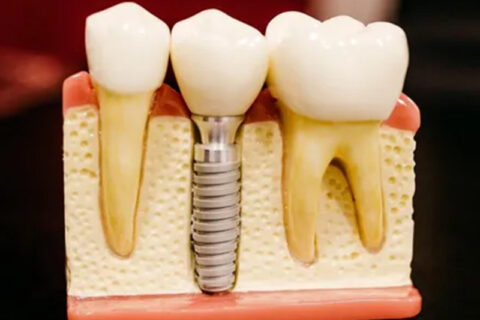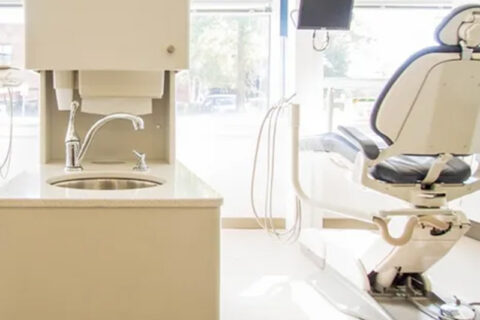Dental Veneers in Ashburn
Should Teens Get Cosmetic Dentistry?

There’s no need to put off cosmetic dental treatment for your kids, even though they may not yet be adults. In fact, teens are particularly sensitive to issues of appearance, and having a beautiful smile could do wonders for her self-esteem and confidence. But are dental veneers the right solution? Here are some considerations that go into making that determination.
First let’s talk a bit about veneers, which are very thin tooth-colored shells that are bonded to the front surfaces of teeth. They are usually made of dental porcelain, which will not absorb stain like natural teeth can. Veneers can improve a tooth’s color, shape and/or size.
In order to prevent a veneer from looking too bulky when it is placed on a tooth, the dentist may first need to remove a bit of surface enamel—a procedure known as “preparation.” Sometimes teeth need preparation for veneers, and sometimes they don’t. But if they do, the procedure is not reversible—the tooth will always need a veneer. And with a young person, we usually try to avoid irreversible dental procedures if possible.
For example, we recently saw a teen for veneers because her teeth were unusually small; enlarging them with veneers gave her a smile that was more in proportion to her face. No tooth preparation was needed because making the teeth bigger was not a problem; it was exactly what we were trying to do. However, depending on the size of your teen’s teeth, placing veneers might have to involve tooth preparation—and this is something we want to be very careful about doing in a young person.
All teeth have a central space, called a pulp chamber, which houses the tooth’s soft inner tissue, including nerves and blood vessels. As we age, that inner chamber shrinks. In a young person, it’s relatively large—meaning it is closer to the surface of the tooth. Therefore, extra care must be taken in removing any tooth structure to place a veneer; if the nerve were damaged in the process, a root canal procedure might be required to save the tooth. However, if those discolored teeth already had significant structural damage or previous root canal treatment, damaging the nerve would not be a concern. That is why a thorough dental exam with x-rays is a crucial step toward making the right treatment recommendation in every case.
Another concern with a teenager is future gum recession, which is something else that can happen as we age. If your teen gets veneers and then experiences gum recession over the next several years, the edge of the veneer, where it meets the natural tooth, could become exposed. Because the veneer and the tooth are different shades, the color contrast may look unappealing, and the veneer might have to be redone. This can happen when veneers are placed in adults as well.
In many cases, the best approach to treating a teenager for a purely cosmetic dental issue is the most conservative one. Perhaps the color of your daughter’s teeth could be improved with bleaching, and the small chip repaired with bonding. This is a technique where a tooth-colored composite material is sculpted onto the chipped area of the tooth and then hardened with a curing light. The dentist keeps building up the layers until the chip is gone.
Some dentists have the training to create an entire veneer this way—without any tooth preparation. While this procedure is conservative and reversible, it will not be as durable as a porcelain veneer, and will absorb stain over time. And, again, the size of the teeth will be a factor in whether this technique will look natural.
It may be that your teen has a type of discoloration that is not responsive to bleaching. This can happen when certain antibiotics are administered early in childhood, or the teeth become over-exposed to fluoride during development (a condition known as fluorosis). If this is the case, some type of veneer may be the best way to go.
As with any dental procedure, we recommend that you take your teen for a thorough dental exam and consultation with a skilled cosmetic dentist. Ask to see before-and-after pictures of their actual patients, preferably teenagers. Any dentist who excels at cosmetic work should be happy to show you the results they have achieved for their patients. With the right dentist by her side, your teen should soon be smiling beautifully and confidently!
We invite you to contact us today to discuss your teen’s smile goals. Dr. Sidhu is your skilled and approachable dentist in Ashburn who can help you achieve your dental dreams.

